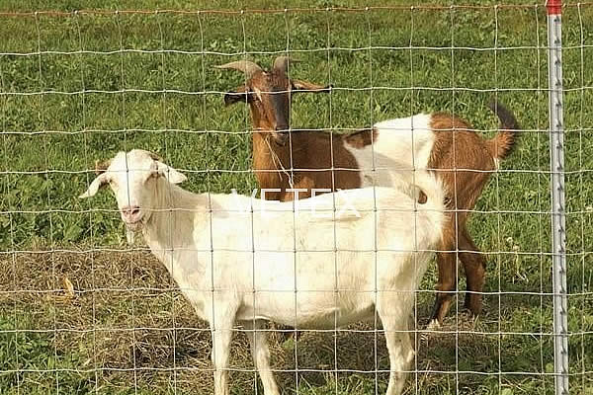 TEL:
+86-13102802206
TEL:
+86-13102802206
 Email:
fencenetting@china.com
Email:
fencenetting@china.com
 Language
Language
 TEL:
+86-13102802206
TEL:
+86-13102802206
 Email:
fencenetting@china.com
Email:
fencenetting@china.com
 Language
Language


The Utilization of Barbed Wire for Pig Farming A Comprehensive Overview
Barbed wire is a staple tool in agriculture, particularly in livestock farming. Its primary function is to create secure enclosures that prevent animals from wandering off and to protect crops from potential damage. When it comes to pig farming, the use of barbed wire becomes increasingly relevant due to the characteristics and behaviors of pigs. This article explores the advantages, considerations, and best practices for utilizing barbed wire in pig farming.
Benefits of Barbed Wire in Pig Farming
1. Security One of the foremost advantages of using barbed wire in pig farming is its ability to provide security. Pigs are known for their intelligence and curiosity. They often attempt to explore their surroundings. Barbed wire fencing helps contain them within designated areas, reducing the likelihood of escapes.
2. Deterrence of Predators Pigs can become targets for various predators, including coyotes, dogs, and even larger birds of prey. Barbed wire serves as an effective barrier, helping to deter these animals from entering the pig enclosure and posing a threat to the livestock.
3. Cost-Effective Solution Compared to other fencing materials, barbed wire is relatively inexpensive. This cost-effectiveness is particularly important for pig farmers managing large herds and extensive areas of land. Barbed wire requires minimal maintenance, which further increases its economic viability.
4. Versatility Barbed wire can be easily adapted to different types of terrains and environmental conditions. Whether in flat, open fields or hilly landscapes, barbed wire can be installed to suit various geographical features, making it a flexible option for farmers.
Considerations When Using Barbed Wire
1. Potential Injuries While barbed wire is an effective security measure, it poses a risk of injury to pigs. Their natural curiosity may lead them to interact with the fence, resulting in cuts or abrasions. To mitigate this risk, farmers should ensure that the wire is installed at an appropriate height and use fewer barbs at the bottom section of the fence.
2. Proper Installation The effectiveness of barbed wire fencing depends on its proper installation. Farmers must ensure that the barbed wire is adequately tensioned and secured to sturdy posts. A well-installed fence can withstand the pushing or leaning of pigs, maintaining its integrity over time.

3. Regular Maintenance Routine inspections of barbed wire fencing are essential to ensure its functionality. Farmers should check for rust, breaks, or areas that may have loosened over time. Prompt repairs will prevent breaches and maintain the safety of the pigs.
4. Legal Regulations Before installing barbed wire, farmers should be aware of any local regulations regarding the use of this fencing material. Some regions may impose restrictions or guidelines on fencing heights and types to ensure the safety of both livestock and neighboring properties.
Best Practices for Barbed Wire Fencing in Pig Farming
1. Height and Spacing A typical barbed wire fence for pigs should be at least 4 to 5 feet high, with the top wire positioned at least 6 inches above the next wire. This configuration not only prevents pigs from jumping over but also minimizes the risk of them getting stuck.
2. Use of Corner Posts Corner posts should be sturdily anchored as they experience the most tension from the wires. This is crucial for the long-term durability of the fencing.
3. Combining Materials To enhance safety, some farmers combine barbed wire with other materials like electric fencing or wooden barriers. This dual approach can deter pigs from approaching the hazardous wire while also reinforcing enclosure security.
4. Feeding Area Pigs should be provided with a separate feeding area within the fenced region. This area should be away from the fence to prevent pigs from congregating too closely and potentially injuring themselves.
Conclusion
The use of barbed wire in pig farming offers numerous advantages, from security to cost-effectiveness. However, understanding its limitations and inherent risks is essential for ensuring the health and safety of the livestock. By following best practices for installation and maintenance, farmers can create secure environments that promote the well-being of pigs while effectively managing their operations. Ultimately, barbed wire serves as a dependable tool in the modern agricultural toolkit, fostering a productive and safe atmosphere for livestock farming.